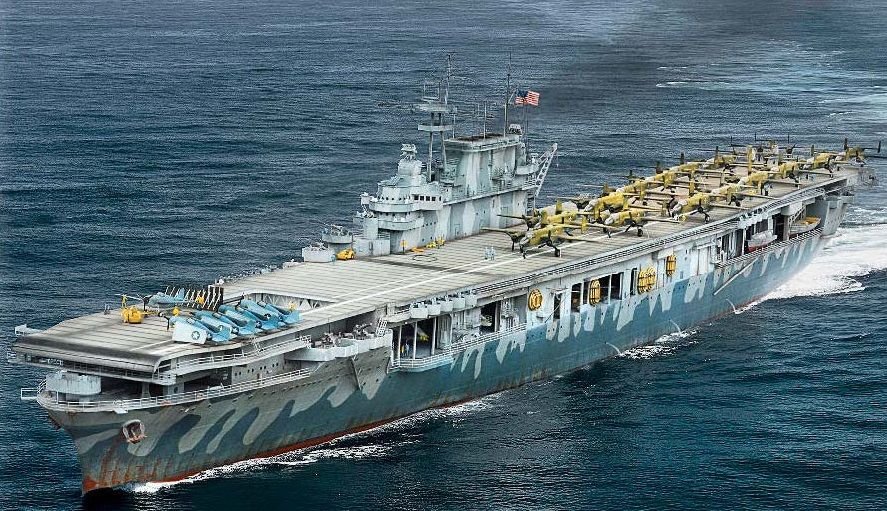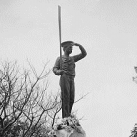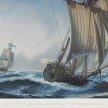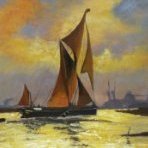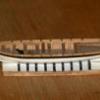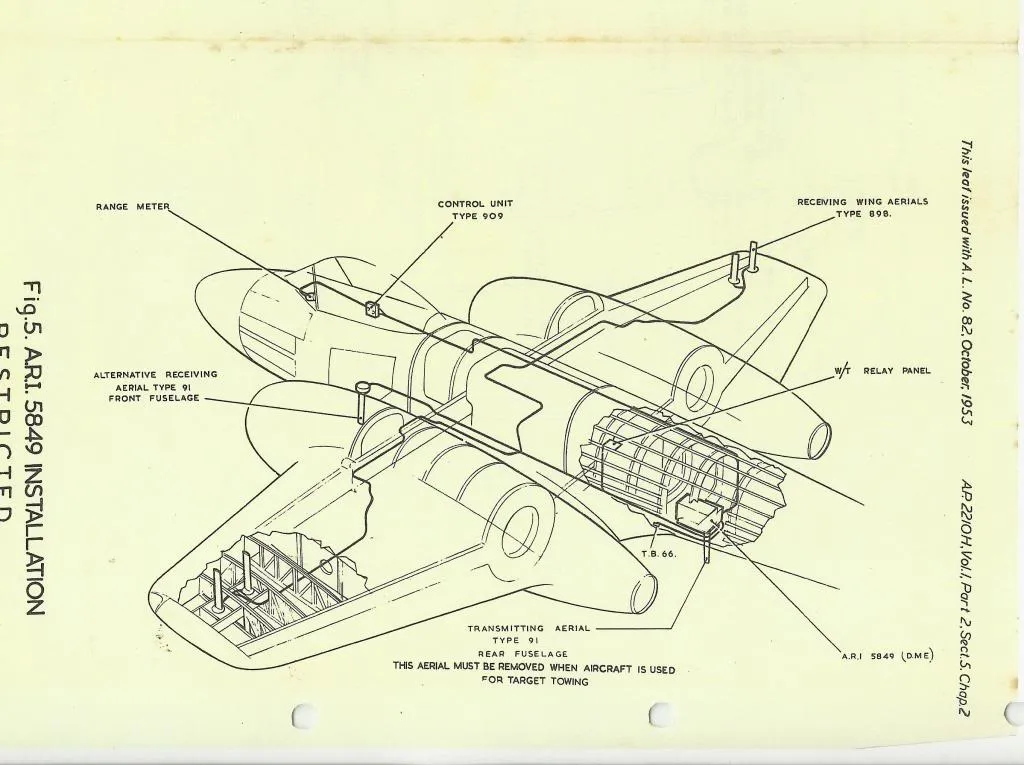-
Posts
4,375 -
Joined
-
Last visited
About Egilman

- Birthday 07/11/1957
Profile Information
-
Gender
Male
-
Location
The Great Pacific NW
-
Interests
Computing, Historical Research, Model Building
Recent Profile Visitors
-
 Egilman reacted to a post in a topic:
Renault FT-17 on a Renault FP artillery transporter by RGL - Meng/U-Models - PLASTIC/RESIN - diorama
Egilman reacted to a post in a topic:
Renault FT-17 on a Renault FP artillery transporter by RGL - Meng/U-Models - PLASTIC/RESIN - diorama
-
 Egilman reacted to a post in a topic:
North American F-100C Super Sabre by Javlin - FINISHED - Trumpeter - 1/48 - PLASTIC
Egilman reacted to a post in a topic:
North American F-100C Super Sabre by Javlin - FINISHED - Trumpeter - 1/48 - PLASTIC
-
 Egilman reacted to a post in a topic:
Kawasaki Ki-61 Hien "Tony" by ccoyle - Halinski/Kartonowy Arsenal - 1/33 - CARD
Egilman reacted to a post in a topic:
Kawasaki Ki-61 Hien "Tony" by ccoyle - Halinski/Kartonowy Arsenal - 1/33 - CARD
-
 Egilman reacted to a post in a topic:
North American F-100C Super Sabre by Javlin - FINISHED - Trumpeter - 1/48 - PLASTIC
Egilman reacted to a post in a topic:
North American F-100C Super Sabre by Javlin - FINISHED - Trumpeter - 1/48 - PLASTIC
-
 king derelict reacted to a post in a topic:
North American F-100C Super Sabre by Javlin - FINISHED - Trumpeter - 1/48 - PLASTIC
king derelict reacted to a post in a topic:
North American F-100C Super Sabre by Javlin - FINISHED - Trumpeter - 1/48 - PLASTIC
-
 Old Collingwood reacted to a post in a topic:
North American F-100C Super Sabre by Javlin - FINISHED - Trumpeter - 1/48 - PLASTIC
Old Collingwood reacted to a post in a topic:
North American F-100C Super Sabre by Javlin - FINISHED - Trumpeter - 1/48 - PLASTIC
-
 Dave_E reacted to a post in a topic:
North American F-100C Super Sabre by Javlin - FINISHED - Trumpeter - 1/48 - PLASTIC
Dave_E reacted to a post in a topic:
North American F-100C Super Sabre by Javlin - FINISHED - Trumpeter - 1/48 - PLASTIC
-
 Canute reacted to a post in a topic:
North American F-100C Super Sabre by Javlin - FINISHED - Trumpeter - 1/48 - PLASTIC
Canute reacted to a post in a topic:
North American F-100C Super Sabre by Javlin - FINISHED - Trumpeter - 1/48 - PLASTIC
-
 Jack12477 reacted to a post in a topic:
North American F-100C Super Sabre by Javlin - FINISHED - Trumpeter - 1/48 - PLASTIC
Jack12477 reacted to a post in a topic:
North American F-100C Super Sabre by Javlin - FINISHED - Trumpeter - 1/48 - PLASTIC
-
 Javlin reacted to a post in a topic:
North American F-100C Super Sabre by Javlin - FINISHED - Trumpeter - 1/48 - PLASTIC
Javlin reacted to a post in a topic:
North American F-100C Super Sabre by Javlin - FINISHED - Trumpeter - 1/48 - PLASTIC
-
 AJohnson reacted to a post in a topic:
North American F-100C Super Sabre by Javlin - FINISHED - Trumpeter - 1/48 - PLASTIC
AJohnson reacted to a post in a topic:
North American F-100C Super Sabre by Javlin - FINISHED - Trumpeter - 1/48 - PLASTIC
-
Nice rendition of the discolored stainless steel aft fuselage... That is about the color of overheated SS... When hot, it would exhibit all the colors of the rainbow, reds, purples and blues in bands between the bulkhead stiffeners... Very pretty... when they first sent them to SEA, they painted them in camo, but that quickly burned off after a few missions... It makes for one of the most difficult planes to paint... You have a great start on a early war bird.... Very nice...
-
 Egilman reacted to a post in a topic:
North American F-100C Super Sabre by Javlin - FINISHED - Trumpeter - 1/48 - PLASTIC
Egilman reacted to a post in a topic:
North American F-100C Super Sabre by Javlin - FINISHED - Trumpeter - 1/48 - PLASTIC
-
 Egilman reacted to a post in a topic:
Peugeot Char d'Assault by RGL - FINISHED - 1/35 - Vargas models - 3D-printed
Egilman reacted to a post in a topic:
Peugeot Char d'Assault by RGL - FINISHED - 1/35 - Vargas models - 3D-printed
-
 Canute reacted to a post in a topic:
D7E Bulldozer by RGL - FINISHED - Hobby link - 1/35 - 3D-printed
Canute reacted to a post in a topic:
D7E Bulldozer by RGL - FINISHED - Hobby link - 1/35 - 3D-printed
-
 Old Collingwood reacted to a post in a topic:
D7E Bulldozer by RGL - FINISHED - Hobby link - 1/35 - 3D-printed
Old Collingwood reacted to a post in a topic:
D7E Bulldozer by RGL - FINISHED - Hobby link - 1/35 - 3D-printed
-
 RGL reacted to a post in a topic:
D7E Bulldozer by RGL - FINISHED - Hobby link - 1/35 - 3D-printed
RGL reacted to a post in a topic:
D7E Bulldozer by RGL - FINISHED - Hobby link - 1/35 - 3D-printed
-
No doubt Brother, once the war was over, the debate on the proper usage of the new weapon ran for years... Even though the tech hadn't quite kept up with the thinking... And figuring out the logistics of moving tank columns were still being worked out... And then, expanding the ideals to Combined Arms in actual combat.... The development of the armored forces concept is a broad and very deep subject.... And we can't forget Dwight Eisenhower in the mix, he was the other genius behind what the US Army Armored force became...
-
Andy not going to argue here but armored vehicles were a concept recognized as advantageous for centuries... Just about every nation on the planet has someone that can claim to be first... Hussite forces in Bohemia developed war wagons – medieval horse-drawn wagons that doubled as wagon forts – around 1420 during the Hussite Wars. These heavy wagons were given protective sides with firing slits; their heavy firepower came from either a cannon or from a force of hand-gunners and crossbowmen, supported by light cavalry and infantry using pikes and flails. Heavy arquebuses mounted on wagons were called arquebus à croc. These carried a ball of about 3.5 ounces (100 g) Armored wagons and locomotives were used during the Civil War... The concept is as old as the hills... But the melding of it all together into a cohesive plan of usage was Patton's idea... The FT-17 is recognized as the first modern pattern tank and set the pattern that has been used ever since... The pierce and encircle calvary tactics was perfect for the equipment of the day... Everything else since is simple refinement of the successful concepts that he first employed in France....
-
Tanks are what they are today due to the forward thinking of one man... And one man only.... George S Patton.... He was the first to apply calvary tactics to light tanks on the battlefield... During WWI he commanded the AEF's tank battalions to great effectiveness... Post war he served under Eisenhower who commanded the US Army's tank school until they disbanded the Tank Corp.... Take a look at the US army's combat cars... 40mph in the '20's but the depression prevented the army from filling their ranks with them... Patton worked closely with Christie to develop the T3 combat car, of which the army had 7... He eventually went back to the calvary when the Tank Corp was disbanded due to inter-army political influence/warfare... but during his time after he was sent to Namur, the French military school where he expounded his ideals with people like Liddle Hart, who wrote books about good armor tactics and was considered the world wide authority on Armor usage on the battlefield... His writings were studied by Heinz Guderian, who developed combined arms blitzkrieg tactics based upon Liddle Hart's books and Patton's writings.... (and developed the methods of supporting them on the battlefield, the infrastructure, the chain of supply for moving armor columns) The rest of them, including Rommel, all learned from the masters... Patton, Liddle Hart & Guderian.... George Patton is the godfather of tank tactics, he wrote the ideals of and demonstrated the proper usage of tanks on the battlefield, during WWI...
-
It's lineage runs to the Holt Tractors... the ideal was the holt artillery tractor, (which worked well in that capacity) would work a lot better with a light gun mounted directly to it, then the usual line of modifications chain took over, Armor, Revolving turrets, Machine gun mounts more than one gun mount, etc etc... What eventually happens in these situations is they overload the load carrying capacity of the chassis itself... Or the power of the engine to actually move it... That is what eventually happened to all the Holt/Catepillar line of armored vehicles, they couldn't get past ordinance testing under real life battlefield conditions... (mostly underpowered and very poor battlefield mobility) But they did learn a lot from them...
-

M3A1 Scout Car by brunnels - Tamiya - 1/35 - PLASTIC
Egilman replied to brunnels's topic in Non-ship/categorised builds
Well, check these out brother.... https://www.ebay.com/itm/172103212015?_skw=tudibaker+US+6+wheels&itmmeta=01K5A51C2WE4H5GSF9K47AF4VB&hash=item2812269bef:g:hZYAAOSwezVWwkdT&itmprp=enc%3AAQAKAAAA0FkggFvd1GGDu0w3yXCmi1dPAcq5kxXbKIx%2BI9M%2BSgx%2BdadejbVBD8ltaeZCluDQSCsCtuoebQZFFECwZuD1l0vid4IWEhNr08kPkVQZLyGBdjAmXSHLlP1WDcJ65T5A7RUrJwu1sTugKEdJuRxmdu7vz64GobWGkg2eSWDMgpdbB0HJvJ%2FxiGcZcU0UkM4mgB6SOFrmA%2BGop8%2FxbCp0UeyAglzUFZeASptfYGum0OXhwcGqwBPMiUez3yAiEQYCCHEEFU3fXVgmbYQPnCqHbio%3D|tkp%3ABk9SR77ChcWqZg Studebaker 6 ton wheels and tires... Same size as the M3 Scout car with the same non-beadlocked rim, and it has the proper split lug traction tire tread... Out of Virginia in the US... I can't tell if they are the Goodyear or Firestone tires, but in their e-Bay store they have both versions... The tire size is a 7.5X20, the standard US truck tire of WWII... I think they will ship anywhere... EG -
Actually, there is only one SB2U left in existence... It was recovered from Lake Michigan in 1990, needless to say it was a wreck after 5 decades underwater... After 20 years of restoration it now resides at the National Naval Aviation Museum I believe... They restored what they could, replaced the fabric covering but left the instruments and parts in the condition they were recovered in, after stabilizing them of course... A very interesting airplane....
-
One of the most famous products to come out of this process was Kingsford Charcoal Briquets... The waste product of Henry Ford's woodworking plant... The white oak and hickory char from burning the shavings from the spoke lathes was found to be great firestarters and when compressed into lumps made excellent cook fire fuel.... It all started in 1919 when Edward G. Kingsford helped Henry Ford procure a stretch of timberland to supply wood for his auto plants. Mr. Ford wondered if all the wood waste generated by his sawmill and plants could be put to better use, and found his answer in a new process for pressing blocks of reconstituted char... While the innovative charcoal briquet was initially marketed under Ford’s own brand, it was eventually renamed Kingsford Charcoal in Edward’s honor..... Very profitable product once it became known... The process was split off into it's own company after Henry passed and still operates today...
-

M3A1 Scout Car by brunnels - Tamiya - 1/35 - PLASTIC
Egilman replied to brunnels's topic in Non-ship/categorised builds
Nice! Especially with a family reference... I would also get a set of these.... M3A1 Scout Car - early 6 holes rim wheels If you really want to match the vehicle in the pic... An early US issued M3A1 I will be following along..... EG -
They also created the L76 engine in 1912.... A 7.6 litre, 4 valves per cylinder, dual overhead cams... The first 4V-DOHC IC engine ever made.... It proved itself in the French Grand Prix, and the Indy 500 and became the racing engine of choice from those days forward... Harry Miller took it and designed his V4 DOHC engine based upon it and made himself a legend at Indy, only to be followed by a guy named Offenhauser.... Peugeot was one of the technical engineering leaders of their day... Right up there with Ford and Krupp and all the rest...
-
Egilman started following Non-ship/categorised builds
-
Hey Brother, Tank Tracks? Painting.... A long sinuous discussion track... First off, what you paint them depends... Yes it depends on when in the tanks life you want to represent... A new on the ramp tank, a recently issued tank, (Baker gave you a GREAT shot of a recently issued tank, which means original manufacturers tracks) or an old road or battle worn veteran tank... They all look different.. A new tank on the delivery ramp? Same color as the tank with bare metal cleat bottoms.... A new issued tank just out on manuevers? As I said, Baker gave you an exemplar photo... Perfect, the sprocket ends show the same color as the tank, the track bodies have picked up a coating of dust and the Cleats have almost worn off the initial paint coat on their bottoms showing plain steel.... Perfect for a well maintained or newly issued tank... A note: Tank tracks wear out quickly... One of the major supply issues with tanks is not only fuel and ammo, but replacement tracks... Especially in WWII, all metal tracks were painted in their tanks base color... For a British tank would be British Army Green... A battle worn tank? I would start by black basing the track overall then using dry brushing and washes bring out the rust browns and dirt browns remembering to leave patches of the green showing, for a tank that has really seen the muck then you can go the mucky dirty look with hard basing some kind of medium on the track to show the lumps then the browns and greys to represent the colors of muck... the world of track painting is just as varied as WWII camuflage, get a few decent color pics and experiment until you gat the look you like... Backer's pic of the late war newly deployed Comet is priceless in this regard... Personally I would go with it.... EG
-

Gloster Meteor F8 by AJohnson - Airfix -1/48- PLASTIC
Egilman replied to AJohnson's topic in Completed non-ship models
Well they tested them in an F8, that's why I said generally... which is true.. But as always, there are exceptions to general rules... Elmer -

Gloster Meteor F8 by AJohnson - Airfix -1/48- PLASTIC
Egilman replied to AJohnson's topic in Completed non-ship models
ARI 5849 or Rebecca Mk.7. (also known as TANCAN) you will find them on Meteors F13 & 14's late in their lives... I believe it was a radar homing device of some type.... They were tested in a Meteor Mk.8 in 1953.... https://apps.dtic.mil/sti/tr/pdf/AD0020257.pdf Note the transmitting antenna on the bottom of the fuselage as well.. You will also see these on Vampire T11's as well... EG Also note: F8's generally didn't carry them....
About us
Modelshipworld - Advancing Ship Modeling through Research
SSL Secured
Your security is important for us so this Website is SSL-Secured
NRG Mailing Address
Nautical Research Guild
237 South Lincoln Street
Westmont IL, 60559-1917
Model Ship World ® and the MSW logo are Registered Trademarks, and belong to the Nautical Research Guild (United States Patent and Trademark Office: No. 6,929,264 & No. 6,929,274, registered Dec. 20, 2022)
Helpful Links
About the NRG
If you enjoy building ship models that are historically accurate as well as beautiful, then The Nautical Research Guild (NRG) is just right for you.
The Guild is a non-profit educational organization whose mission is to “Advance Ship Modeling Through Research”. We provide support to our members in their efforts to raise the quality of their model ships.
The Nautical Research Guild has published our world-renowned quarterly magazine, The Nautical Research Journal, since 1955. The pages of the Journal are full of articles by accomplished ship modelers who show you how they create those exquisite details on their models, and by maritime historians who show you the correct details to build. The Journal is available in both print and digital editions. Go to the NRG web site (www.thenrg.org) to download a complimentary digital copy of the Journal. The NRG also publishes plan sets, books and compilations of back issues of the Journal and the former Ships in Scale and Model Ship Builder magazines.

